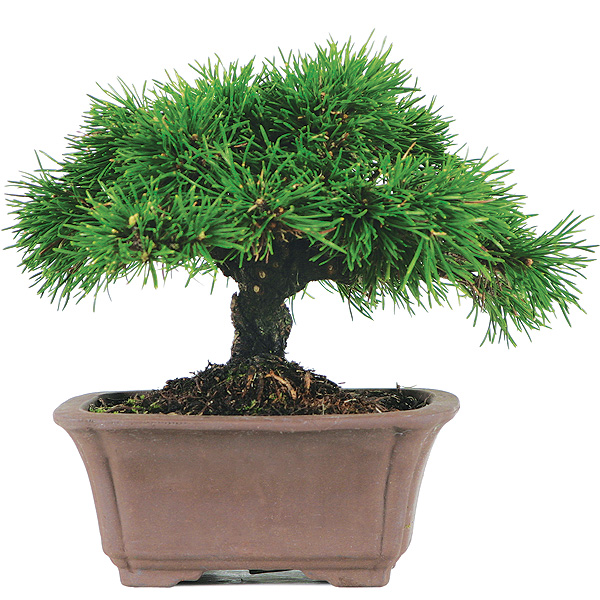The Mugo Pine Bonsai tree is a beautiful and hardy bonsai. It is perfect for beginners and experts alike. In this guide, we will learn how to care for and enjoy this wonderful bonsai tree.

Credit: www.bonsaiboy.com
What is a Mugo Pine Bonsai Tree?
The Mugo Pine, also known as Pinus mugo, is a small pine tree. It is native to the mountains of Europe. It is very popular in bonsai due to its rugged beauty.
Features Of Mugo Pine Bonsai
- Small, needle-like leaves
- Twisted branches
- Thick, textured bark
- Compact size

Credit: www.bonsaioutlet.com
Why Choose a Mugo Pine Bonsai?
Mugo Pine Bonsai trees are easy to care for. They are resilient and adaptable. They can withstand various conditions. Plus, they look stunning with minimal effort.
Benefits Of Mugo Pine Bonsai
- Easy to maintain
- Beautiful appearance
- Perfect for beginners
- Long lifespan
How to Care for a Mugo Pine Bonsai
Caring for a Mugo Pine Bonsai is simple. Follow these steps to keep your bonsai healthy and happy.
Watering
Water your Mugo Pine Bonsai regularly. The soil should be moist but not soggy. Overwatering can cause root rot. Underwatering can dry out the tree.
Sunlight
Place your bonsai in a spot with plenty of sunlight. Mugo Pine Bonsai needs at least six hours of sunlight daily. They can tolerate some shade, but not too much.
Soil
Use well-draining soil for your Mugo Pine Bonsai. A mix of akadama, pumice, and lava rock is ideal. This ensures good drainage and aeration.
Fertilizing
Fertilize your bonsai during the growing season. Use a balanced fertilizer every two weeks. Reduce fertilizing in winter.
Pruning
Prune your Mugo Pine Bonsai to maintain its shape. Remove dead or yellowing needles. Trim back new growth to encourage branching.
How to Train a Mugo Pine Bonsai
Training a Mugo Pine Bonsai involves wiring and shaping. This helps create the desired form and style.
Wiring
Wrap wire around the branches to shape them. Be gentle to avoid damaging the bark. Leave the wire on for a few months. Check regularly to ensure it does not cut into the bark.
Styles
Mugo Pine Bonsai can be styled in various ways. Some popular styles include:
- Formal Upright
- Informal Upright
- Slanting
- Cascade
- Semi-Cascade
Repotting
Repot your Mugo Pine Bonsai every two to three years. This ensures healthy roots and fresh soil. Spring is the best time for repotting.
Common Problems and Solutions
Even with the best care, problems can arise. Here are some common issues and how to solve them.
Yellowing Needles
Yellowing needles can be a sign of overwatering or poor drainage. Check the soil and adjust your watering routine.
Pests
Mugo Pine Bonsai can attract pests like aphids and spider mites. Use insecticidal soap or neem oil to treat infestations.
Root Rot
Root rot is caused by overwatering. Ensure your bonsai has well-draining soil. Reduce watering if needed.
Conclusion
Mugo Pine Bonsai trees are a fantastic addition to any bonsai collection. They are easy to care for and look stunning. With proper care and training, your Mugo Pine Bonsai will thrive for many years.
Frequently Asked Questions
Can Mugo Pine Bonsai Be Grown Indoors?
Mugo Pine Bonsai prefers outdoor conditions. They need plenty of sunlight and fresh air.
How Often Should I Water My Mugo Pine Bonsai?
Water your bonsai when the top inch of soil feels dry. Avoid overwatering.
What Is The Best Fertilizer For Mugo Pine Bonsai?
Use a balanced fertilizer during the growing season. Fertilize every two weeks.
How Do I Prune My Mugo Pine Bonsai?
Prune to maintain shape and remove dead needles. Trim new growth to encourage branching.
When Should I Repot My Mugo Pine Bonsai?
Repot every two to three years. Spring is the best time for repotting.
Additional Resources
For more information on Mugo Pine Bonsai, check out these resources:

